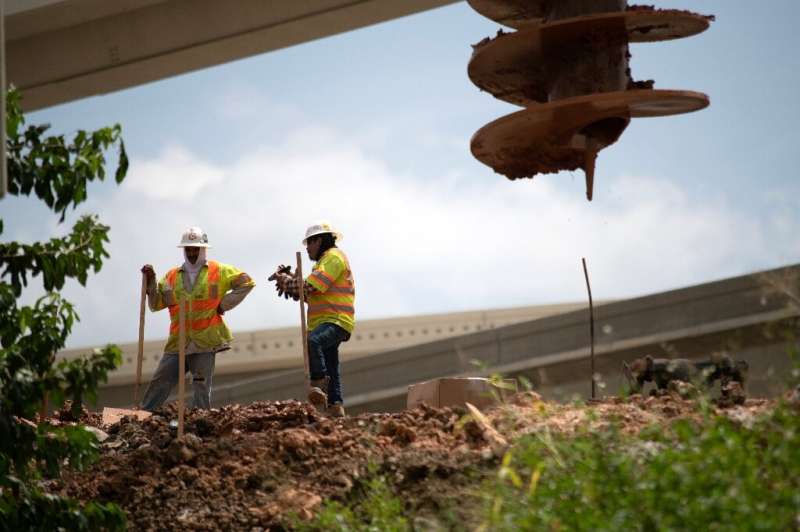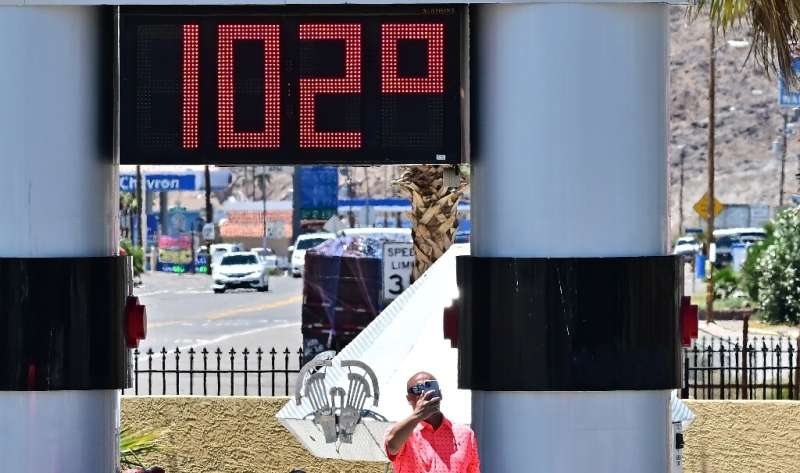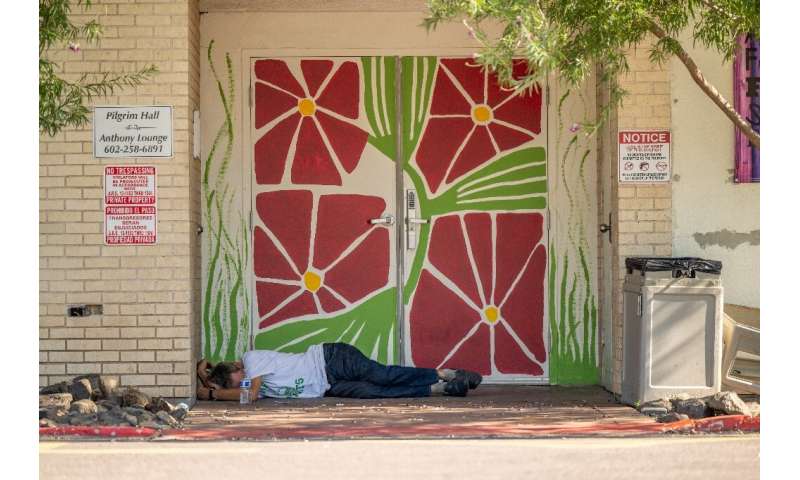This article has been reviewed according to Science X's editorial process and policies. Editors have highlighted the following attributes while ensuring the content's credibility:
fact-checked
reputable news agency
proofread
Southwest US roasts in devastating heat wave

Tens of millions of Americans were facing dangerously high temperatures Friday as a powerful heat wave stretched from California to Texas, with its peak expected this weekend.
A heat dome has been baking the southwestern states all week, posing serious health risks to the elderly, construction workers, delivery workers and the homeless.
In Arizona, one of the hardest-hit states, residents face a daily endurance marathon against the sun.
Phoenix, the state capital, will record its 15th straight day above 109 degrees Fahrenheit (43 degrees Celsius) on Friday, according to the National Weather Services (NWS).
The heat forced the cancelation of a series of concerts meant to take place in the evenings each summer weekend in the city.
Some Arizona residents this week posted social media photos of tar melting on their roofs, or videos of eggs frying in the scorching sun.
Authorities have been sounding the alarm for days, advising people to avoid outdoor activities in the daytime and to be on the watch for signs of dehydration, which can quickly become fatal in such temperatures.
Deadly danger
The weather service in Las Vegas warned that assuming high temperatures naturally come with the area's desert climate was "a DANGEROUS mindset! This heatwave is NOT typical desert heat due to its long duration, extreme daytime temperatures, & warm nights."

"Now the most intense period is beginning," it added, as the weekend approached with the threat of record highs on Sunday.
California's famous Death Valley, one of the hottest places on Earth, is also likely to reach new peaks on Sunday, with the mercury possibly rising to 130F (54C).
This week, the south of the Golden State was affected by numerous small wildfires.
Unlike floods or wildfires, heat is invisible yet remains the deadliest weather phenomenon in the United States and is regularly underestimated.
Last weekend, sweltering temperatures killed 10 migrants along the US border with Mexico, according to the Border Patrol.
And last week, Arizona's most populous county, Maricopa, released a report counting 425 heat deaths in the summer of 2022, up 25 percent from the previous year.
The figures have made headlines in the United States, as the heat numbs almost the entire south.
In Texas, the city of El Paso is racking up records: on Thursday, it recorded its 27th day above 100F (37.7C).
-

A man is given medical aid after collapsing from the heat in a Phoenix supermarket in July 2023 in Arizona. -

A homless person lies in the shade during the heat wave in Phoenix, Arizona, in July 2023. -

A man exhausted by the scorching heat takes a rest at a Phoenix church in Arizona in July 2023.
Climate change
The White House took advantage of the current heat wave to announce a "national heat strategy."
"Millions of Americans are being impacted by extreme heat waves, which are growing in intensity, frequency, and duration due to climate change," President Joe Biden said in a statement.
While it can be hard to attribute a particular weather event to climate change, scientists insist that global warming—linked to humanity's dependence on fossil fuels—is responsible for the multiplication and intensification of heat waves in the world.
The US heatwave comes after the EU's climate monitoring service said the world saw its hottest June on record last month.
© 2023 AFP





















